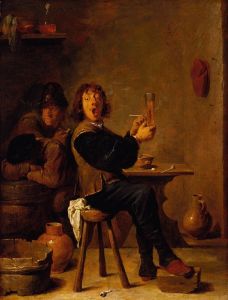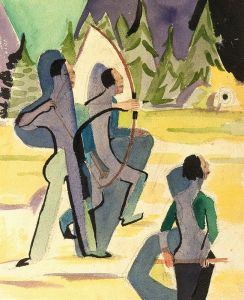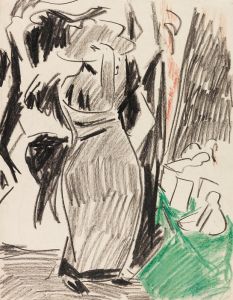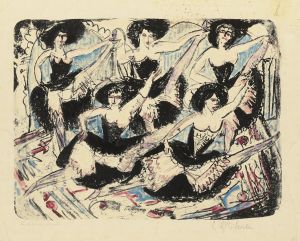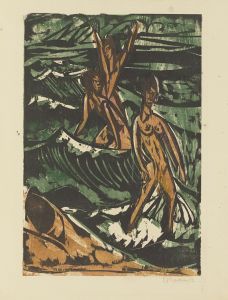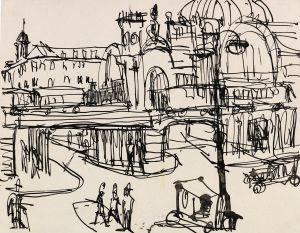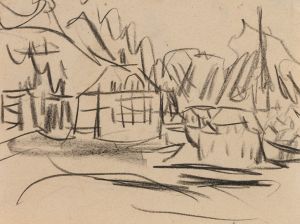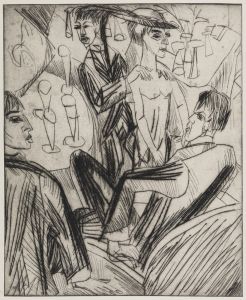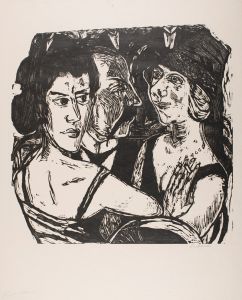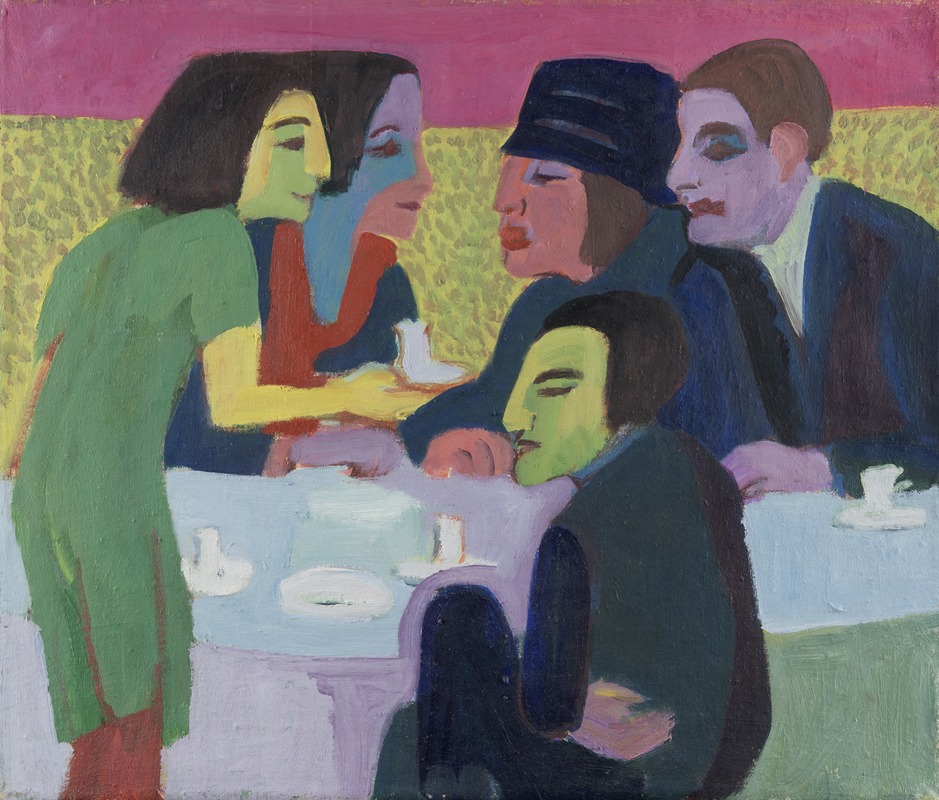
Scene at a Café
A hand-painted replica of Ernst Ludwig Kirchner’s masterpiece Scene at a Café, meticulously crafted by professional artists to capture the true essence of the original. Each piece is created with museum-quality canvas and rare mineral pigments, carefully painted by experienced artists with delicate brushstrokes and rich, layered colors to perfectly recreate the texture of the original artwork. Unlike machine-printed reproductions, this hand-painted version brings the painting to life, infused with the artist’s emotions and skill in every stroke. Whether for personal collection or home decoration, it instantly elevates the artistic atmosphere of any space.
Ernst Ludwig Kirchner's painting Scene at a Café is a work by the German Expressionist artist, who was a founding member of the influential art movement Die Brücke (The Bridge). Kirchner, known for his vivid use of color and dynamic compositions, created works that often depicted urban life, human interaction, and the psychological tension of modern existence.
Scene at a Café exemplifies Kirchner's distinctive style, characterized by bold, angular forms and expressive brushwork. The painting portrays a café scene, a common subject in Kirchner's oeuvre, reflecting his interest in capturing the social and cultural atmosphere of early 20th-century Europe. The figures in the painting are rendered with exaggerated features and postures, emphasizing emotional intensity over realistic representation. The use of vibrant, non-naturalistic colors further enhances the dramatic and expressive quality of the work.
Kirchner's art was deeply influenced by the rapid modernization of society during his time, as well as by his personal experiences and struggles. His works often convey a sense of alienation and unease, themes that resonate in Scene at a Café. The café setting, a popular gathering place in urban life, serves as a backdrop for exploring human relationships and the complexities of social interaction.
The exact date of creation for Scene at a Café is not definitively documented, but it is consistent with Kirchner's active period during the early 20th century, particularly the 1910s and 1920s. This was a time when Kirchner was producing some of his most significant works, influenced by the cultural vibrancy of cities like Dresden and Berlin.
As with many of Kirchner's paintings, Scene at a Café reflects the artist's engagement with the Expressionist movement's goals of conveying emotional and psychological depth through art. The painting's composition and style align with the principles of Die Brücke, which sought to break away from traditional artistic conventions and explore new ways of representing the human experience.
Today, Ernst Ludwig Kirchner is regarded as one of the most important figures in German Expressionism. His works, including Scene at a Café, are celebrated for their innovative approach to form and color, as well as their ability to capture the spirit of a rapidly changing world. The painting is held in a private collection or museum, though specific details about its current location or provenance are not widely available.
This concise overview provides a factual account of Scene at a Café based on Kirchner's artistic legacy and the characteristics of his work.





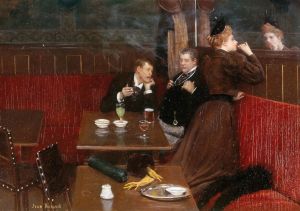
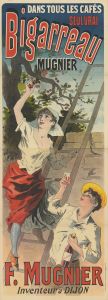
![Designs for the Tavern Club, 333 Michigan Avenue, Chicago, Illinois.] [Perspective for main dining room with bay window](/imgs/249329/s/winold-reiss-designs-for-the-tavern-club-333-michigan-avenue-chicago-illinois-perspective-for-main-dining-room-with-bay-window-4b6bebcc.jpg)
![Interior design sketches for Alamac Hotel, 71st and Broadway, New York, NY.] [Study for living room suite](/imgs/249366/s/winold-reiss-interior-design-sketches-for-alamac-hotel-71st-and-broadway-new-york-ny-study-for-living-room-suite-4619965b.jpg)
